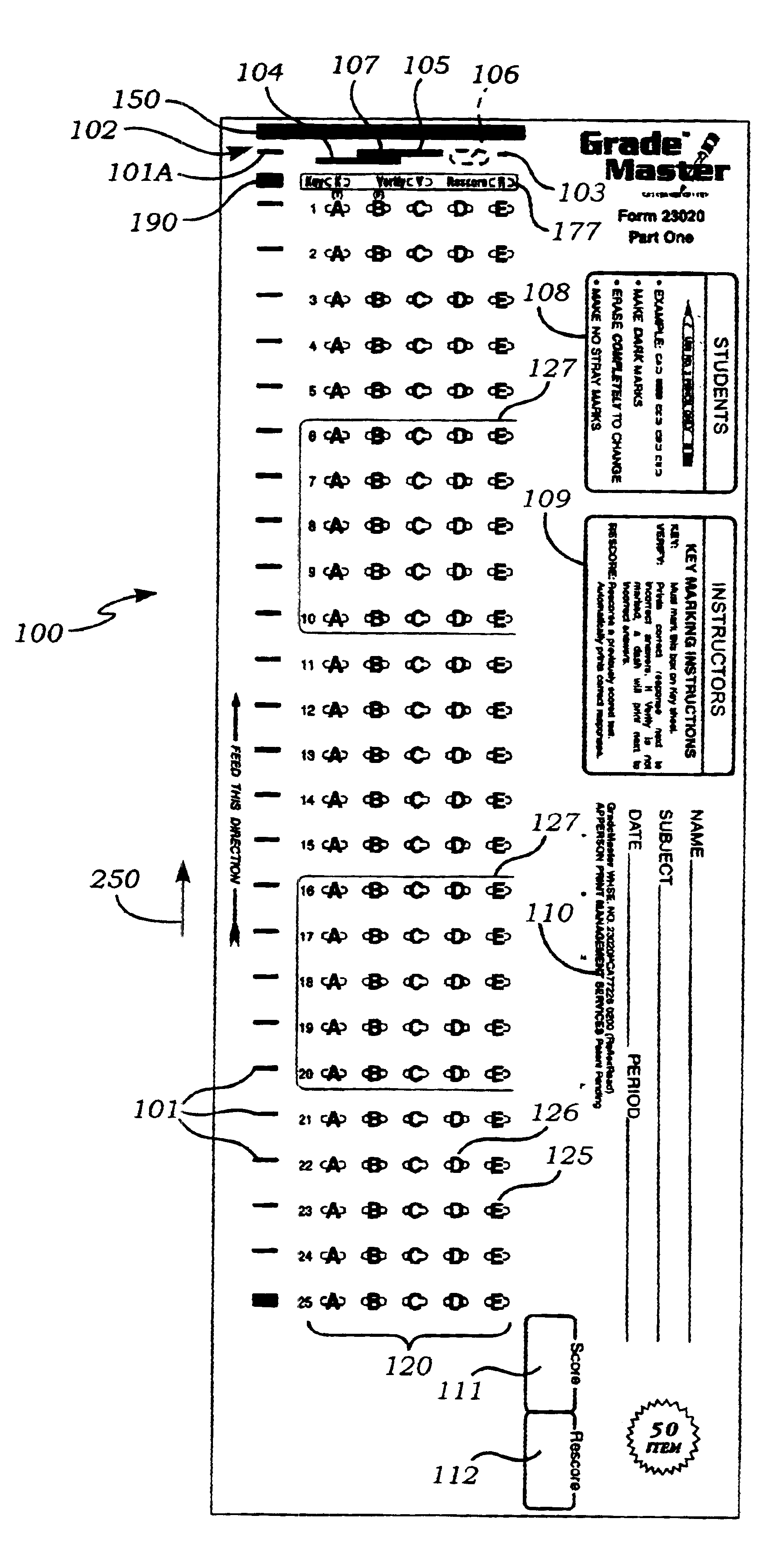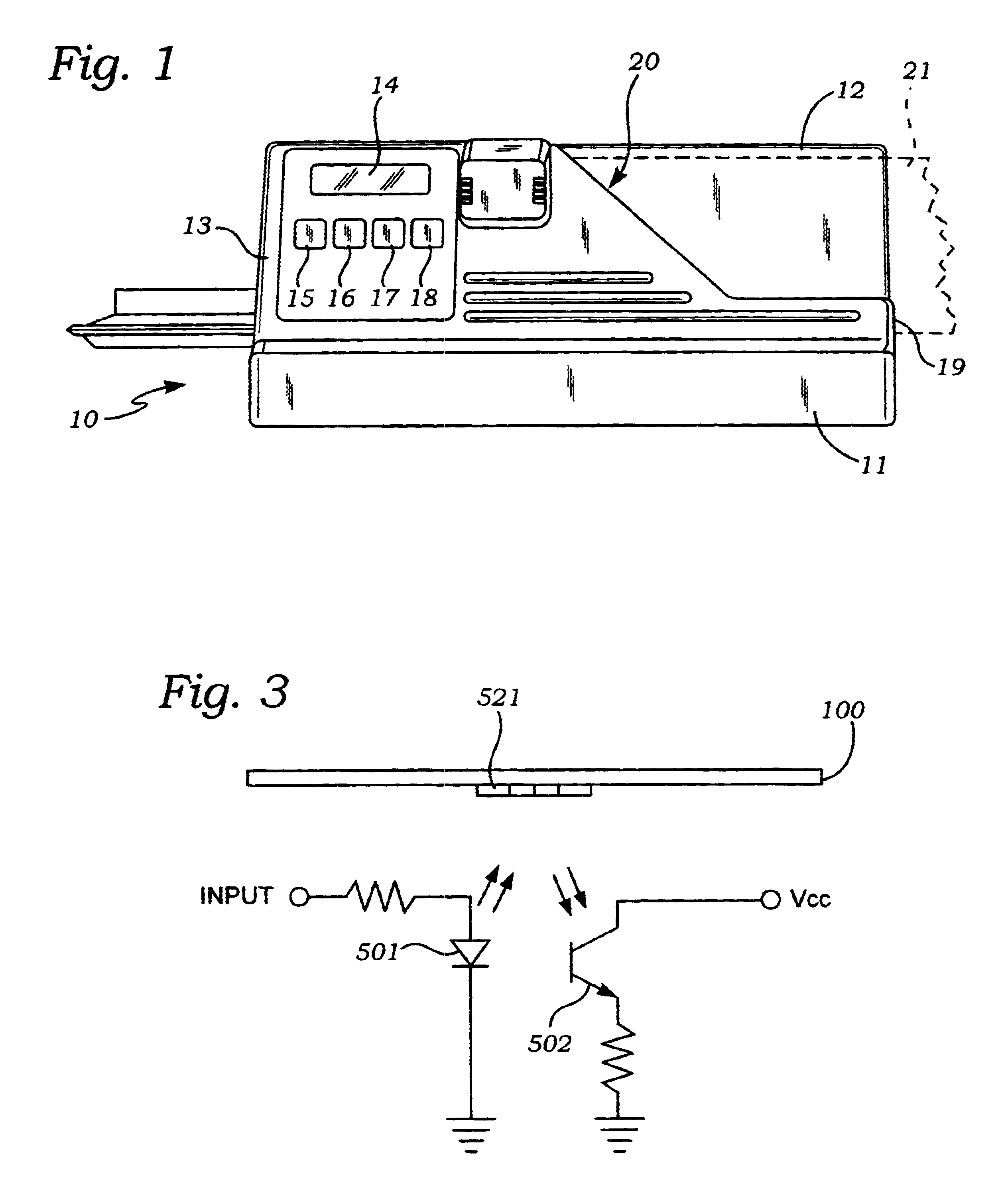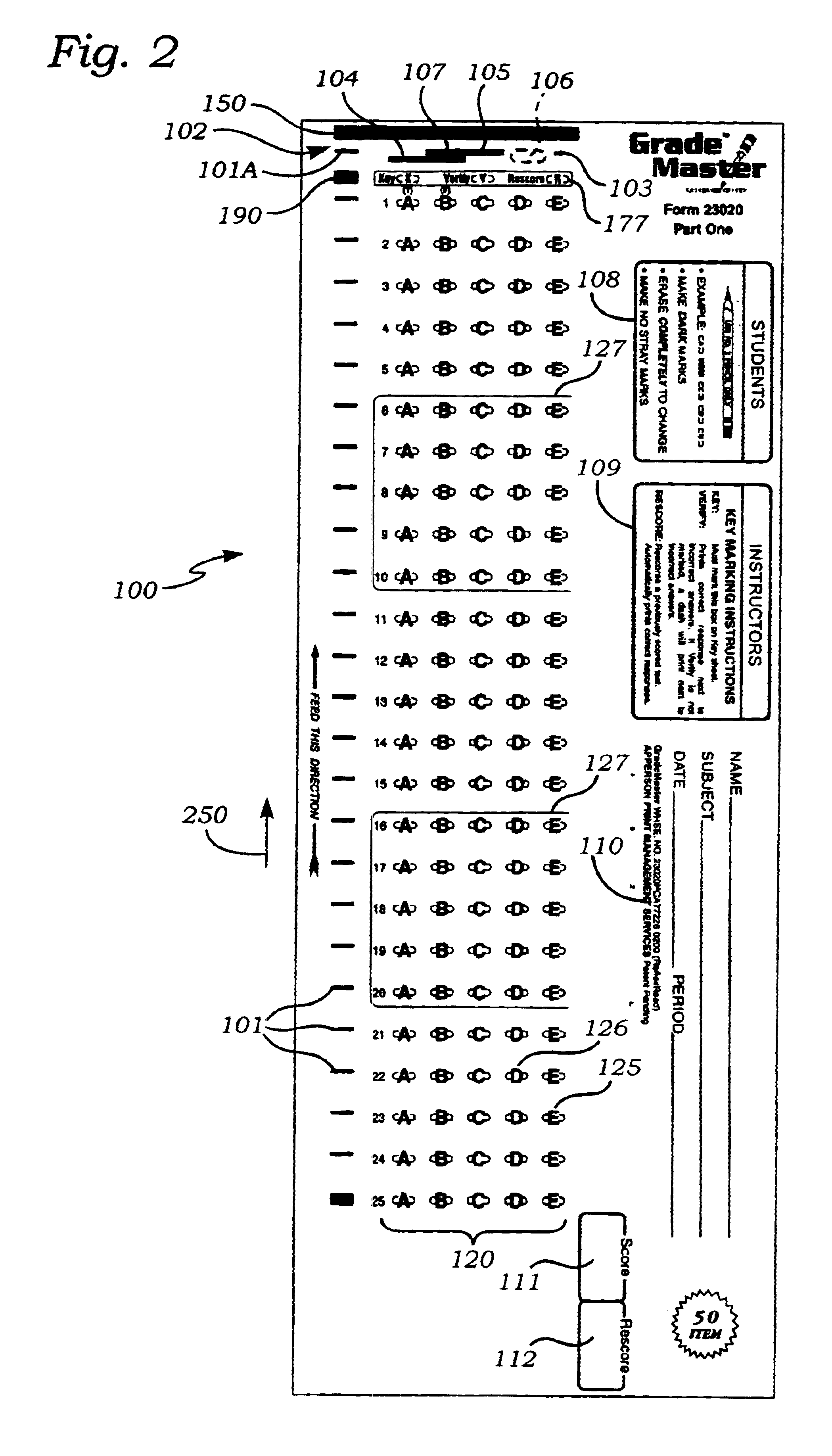Data processing form for use with a scanning apparatus
a scanning apparatus and data processing technology, applied in the field of scanning apparatus forms, can solve the problems of inability to easily operate on other test forms, inconvenient use for users, and devices usually designed with limited versatility, so as to achieve the effect of adding versatility
- Summary
- Abstract
- Description
- Claims
- Application Information
AI Technical Summary
Benefits of technology
Problems solved by technology
Method used
Image
Examples
Embodiment Construction
Referring now to FIG. 1, there is shown a front, perspective view of one type of scanner 10 which can read the forms of the instant invention. The scanner 10, which is typical only is described only as representative and is not limitative of the invention. Any suitable scanner can be utilized. The illustrative scanner includes a base 11, a back support 12 and a housing 13. The back support 12 is used, inter alia, to support a form or document 21 (shown dashed) which is to be scanned by the system.
A channel 19 is formed between the base 11 and the back support 12 to receive an edge of the form 21. A slot 20 is formed between the back support 12 and the housing 13 so that the form 21 can be passed therethrough adjacent to the scanning mechanism described hereinafter. A display 14 of any suitable type, such as light emitting diodes (LED's) or the like is used to provide information to the user, as described hereinafter. In addition, the control buttons 15, 16 and 17 are used to cause t...
PUM
 Login to View More
Login to View More Abstract
Description
Claims
Application Information
 Login to View More
Login to View More - R&D
- Intellectual Property
- Life Sciences
- Materials
- Tech Scout
- Unparalleled Data Quality
- Higher Quality Content
- 60% Fewer Hallucinations
Browse by: Latest US Patents, China's latest patents, Technical Efficacy Thesaurus, Application Domain, Technology Topic, Popular Technical Reports.
© 2025 PatSnap. All rights reserved.Legal|Privacy policy|Modern Slavery Act Transparency Statement|Sitemap|About US| Contact US: help@patsnap.com



